CW88 March, 2024
Cherry blossoms will come out soon
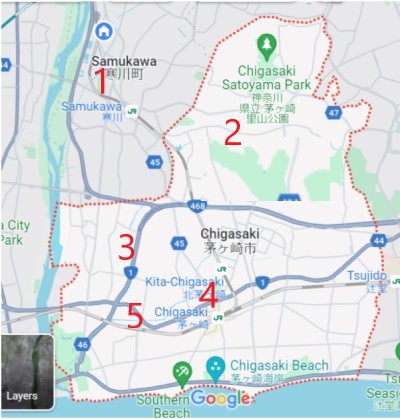
Weather reports said in February that Somei Yoshino cherry trees would bloom earlier than usual. However, due to the latest cold weather, the cherry buds have not swelled yet. They will probably have bloomed by April 1, when new graduates go out into the world.
There are many cherry-blossom viewing spots in and around the city: riverbanks, railroad truck sides, approaches to shrines, parks, school grounds, and many more places. The photos below are just examples. You do not have to go to distant places.




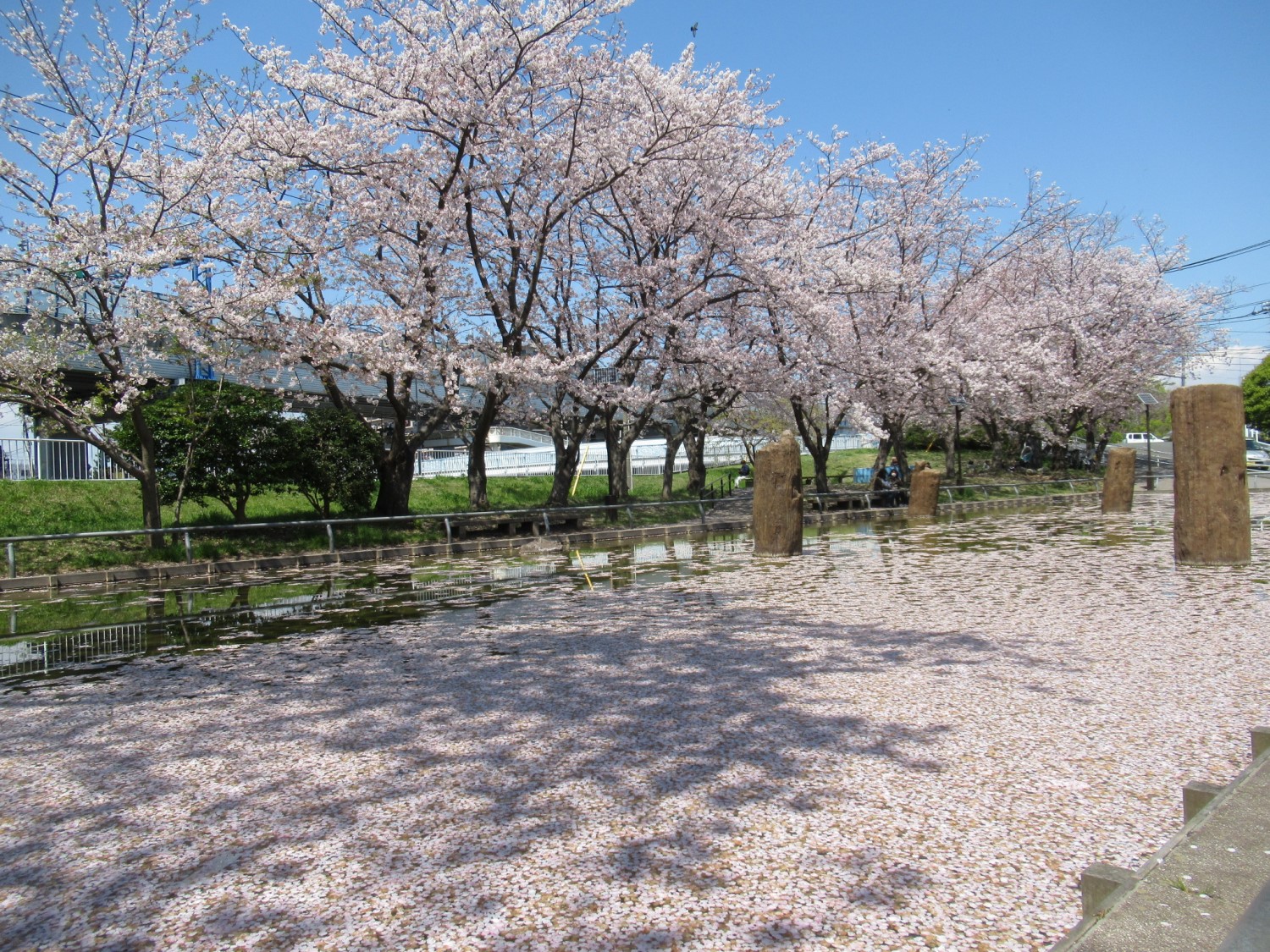
Another sign of spring, Diamond Fuji
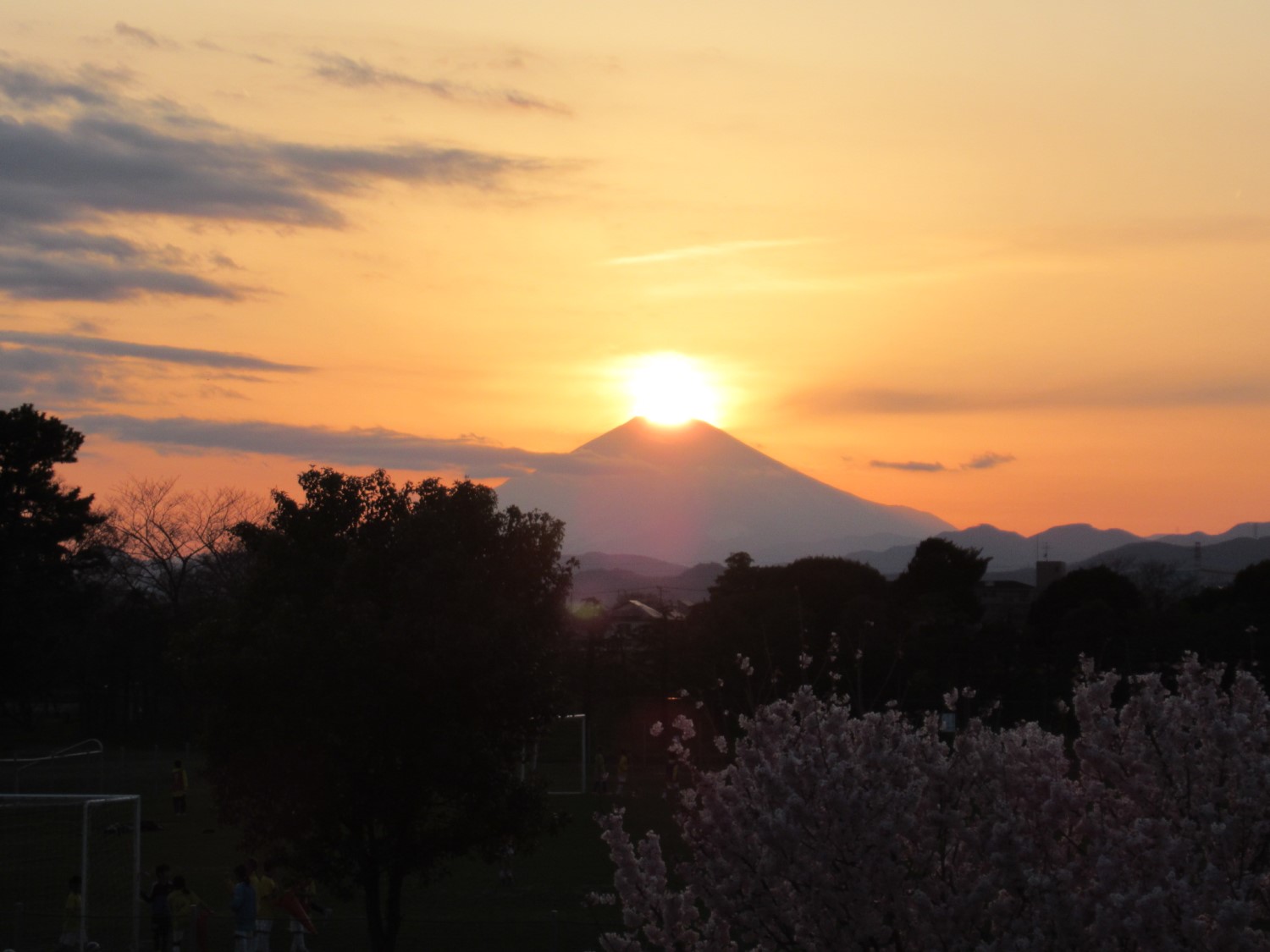
The photo was taken around 17:35 on March 22 (Fri) on the eastern bank of the Sagami River, about 500 meters upstream from Kamikawa Bridge. The sun set on the summit of Mt. Fuji. The scene is called “Diamond Fuji” among photography enthusiasts.
The spectacle is a phenomenon to be viewed not from all the places where Mt. Fuji can be seen, but from the places where Mt. Fuji can be seen in the east or in the west. As for viewing spots, go to https://www.ktr.mlit.go.jp/chiiki/chiiki00000111.html
As the latitudes of Chigasaki (35.33) and Samukawa (35.22) are almost equal to that of the summit of Mt. Fuji (35.22), Diamond Fuji is viewed around Vernal Equinox Day on the bank somewhere between the Sagami estuary and northern Samukawa. The spectacle is another sign of spring.
Flowers of the season: Magnolia
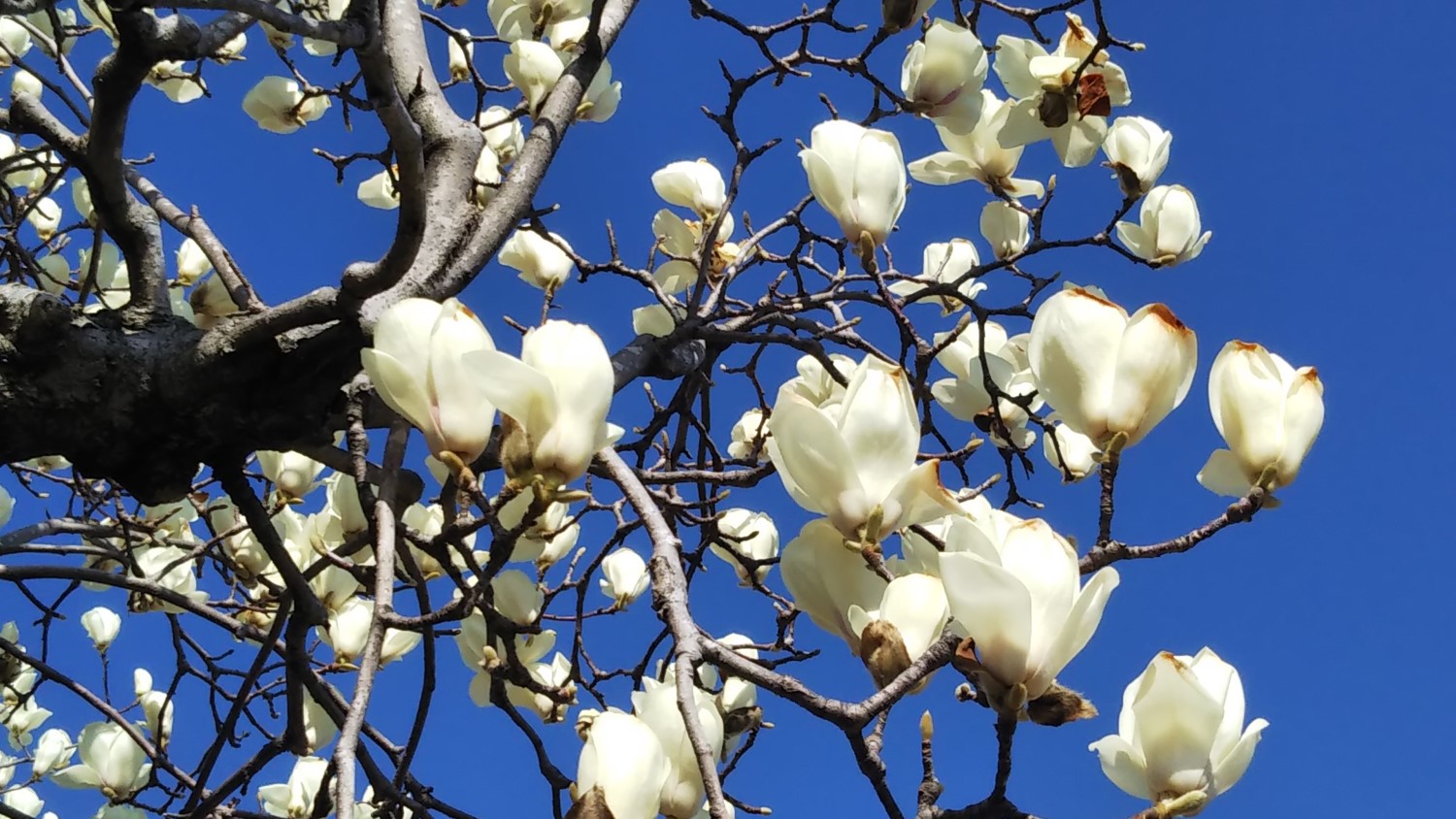
Magnolia blossoms herald the arrival of spring one month ahead of cherry blossoms. Magnolia trees with white blossoms in full bloom look very attractive under the blue sky. Magnolias have several varieties, and two of them are introduced in the article; one is Magnolia denudata, which produces white blossoms, and the other is Magnolia liliiflora with purplish red blossoms. The former comes out earlier than the latter. They both originated in China and were brought into Japan in ancient times for medical and ornamental purposes. Dried buds of the two varieties, which are called ‘shin-i’ in Japanese, are known for their efficacy in the treatment of nasal inflammation, headaches, fever and cough. The name of Magnolia liliiflora appeared in a book written in the Heian Era (794 ~ 1185). They are still used as ingredients of herbal medicines today.
Magnolia denudata’s blossoms, five to six centimeters long, are smaller than those of Magnolia liliiflora, but their shapes are similar. The excurrent tree grows to 20 meters high and leaves sprout after all the blossoms have dropped out.
The blossoms of Magnolia liliiflora, about ten centimeters long, consist of nine tepals: three external tepals, two to three centimeters long and yellowish green, are sepals. The remaining six inner tepals, about nine centimeters long and purplish red, are petals. They bloom first, and new leaves sprout from the tree later. The bushy tree grows up to five meters high, and leaves last longer than blossoms. The blossoms emit an aromatic scent.
In early spring, the buds of the two varieties turn north because their south sides grow faster by getting a lot of sunlight. Thus, the two varieties are called compass plants and play a role of a magnetic compass in the mountain. The leaves of the two are big egg-shaped and tipped with spines.
In addition to Magnolia liliiflora, and Magnolia denudata, another magnolia variety called Magnolia kobus is well known to Japanese people because it is native to Japan. Its white blossoms, smaller than Magnolia denudata, bloom earlier than the denudata variety.
History of Chigasaki: Serizawa Village (2)
On the picture, a descending road toward the north, and a bridge on the Koide River are drawn. The road passes by Koshikake Shrine, the village shrine, and then goes over the bridge. At the foot of the bridge, there is a sign, “お江戸道、十二里、新道なり (Oedo, Juniri, Shindou nari),” meaning the road to Oedo, 48 km, and a new road. The sign indicates the bridge was the starting point for journeys to Edo, which was 48 km (12 x 4 km) away. Villagers first went to Yoda Village in today’s Fujisawa and went on Nakahara highway to Edo.

新編相模国風土記稿 (the new edition of Sagami province topography) describes that there were 100 households in Serizawa Village. The number of the households had doubled since the picture was drawn in the late 17th century. About Koshikake Shrine, the topography says “Koshikake Myojinsha, the historic place where the god of Oba* sat down. A small stone was placed there as an object of worship.” However, “the small stone” is actually so large that even an adult cannot lift it up. The stone is placed by the root of a large chinquapin tree.
*Oba: a southeastern area of Fujisawa city
新編相模国風土記稿 also describes that a bettoji temple in Serizawa, which supervises shrines, is Hotakuji Temple, a Buddhism school which worships mountains. In the Edo period, against the backdrop of the syncretism of Shinto and Buddhism, Hotakuji Temple supervised Koshikake Shrine. The temple used to be next to the shine. But the Meiji government separated temples from shrines, and only trees grow thick on the site today.

There is a description of the village of the Meiji era in 皇国地誌 (the topography by the Meiji government). The topography says the person who sat on Koshikake Ishi, or Koshikake Stone, was 日本武尊, or Yamato Takerunomikoto. He was on his way to Ezo, today’s northern Japan, to conquer the forces that were against the central government.
The topography also says the population of the village was 560 farmers, 20 part-time farmers (agriculture and commerce), seven part-time farmers (agriculture and hardware production), and one doctor. There was no description of the number of households.
Interested in Japanese proverbs?
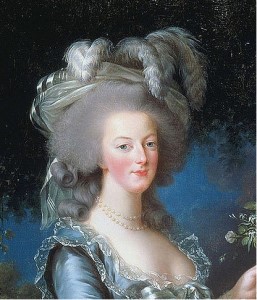
1)佳人薄命 (KAJIN HAKUMEI)
KAJIN means a beautiful woman, and HAKUMEI to die young.
The saying literally means a beautiful lady dies young. Beautiful women are liable to lead checkered lives, because they experience a lot of misfortunes. Consequently, they cannot lead happy lives. The saying will remind people of several pretty women who died young: Cleopatra, a queen of ancient Egypt, Yang Guifei, a queen of ancient China, and Marie Antoinette, a queen of France in the 18th century. They died at 39, 38, and 37 tragically. Their beauty raised them to the throne, and provided them with cruel fates which were caused by men’s rulings and struggles. However, some say beautiful women live long because many men are kind to them and would willingly help them.
The proverb is in Collected Poems of Chinese poet Su Shi (1037~1101). Its English equivalents are:
●Beautiful flowers are soon picked.
●Beauty and luck seldom go together.
●Beauty fades like a flower.
2)好きこそものの上手なれ (SUKI KOSO MONO NO JOZU NARE)
SUKI> means to like, KOSO because, MONO things one is doing, NO to be, JOZU good at, and NARE it is said.
People try hard when they are engaged in their hobbies or something they like to do. Therefore, they can develop skills promptly. The National High School Baseball Invitational Tournament is underway. Thirty-two schools are playing at Koshien Stadium now. They were selected from all the nation’s 3,900 high school baseball teams. They had won hard battles in their areas thanks to a lot of practice. Team members of these schools endured hard training because they love baseball. And some of them may go on to become professional players as they want to enjoy baseball throughout their lives.
The proverb is in菅原伝授手習鑑, or Sugawara Denju Tenaraikagami, a representative Kabuki play, which was first performed in Osaka in 1746. Its English equivalents are:
●All things are easy that are done willingly.
●Fondness gives skill.
●What one likes to do, one will do well.
Short Essays on Chigasaki-10 Yukichi Fukuzawa(福澤諭吉)& Shojun Ozawa (小沢昌順), a smallpox doctor at Yabata Village 8
A letter from Yukichi Fukuzawa to Yuteki Hayashi* is kept by the Ozawa Family in Yabata, Chigasaki. Yukichi wrote the letter on June 26, 1874. Yuteki, a doctor of Western medicine, was one of his disciples. It shows why Shojun visited Yukichi, who had stayed on Enoshima Island.
Yukichi wrote in his letter, “Shojun, who is a doctor at Yabata, visited me the other day. He said the prefectural government ordered him to vaccinate people against smallpox, but he was a doctor of Chinese medicine, and didn’t have enough expertise in the treatment of smallpox. So, he wanted to learn Western medicine at school in Yokohama, or have lessons of a Western medicine doctor. He asked me to introduce an expert. I met him for the first time, and was very impressed with his strong will. So, I want you to instruct him.”
Shojun was born in 1844 as the first boy of doctor Kenjun Ozawa, and succeeded his father’s medical practice in 1865. In 1870, ordered by the prefectural government, Shojun vaccinated people against smallpox at five districts: Ichinomiya, Tamura, Isehara, Hadano, and Oiso. He was appointed as the village master of Yabata, and also served as a member of village assembly of Tsurumine. He passed away in 1906 at 63.
(The source of the essay: Chigasaki People’s Book published by Chigasaki City)
As for Shojun Ozawa, go to
https://www.city.chigasaki.kanagawa.jp/_res/projects/default_project/_page_/001/044/142/0801.pdf

* Yuteki Hayashi (有的 早矢仕), was born in 1837. He entered Keio University and learned Dutch and English under the teaching of Yukichi Fukuzawa in 1867, and became a doctor of Western medicine in 1868. He was also known as the founder of Maruzen, a large book store in Tokyo, and the Yokohama Shokin Bank. His son, Shiro Hayashi, is thought to be the originator of Hayashi rice (the photo on the right: Hashed beef from Wikipedia). He cooked it for his father who was always busy examining patients, and it was also served for patients.
Events in February and March
Exhibition of Ex Libris and New Year’s cards
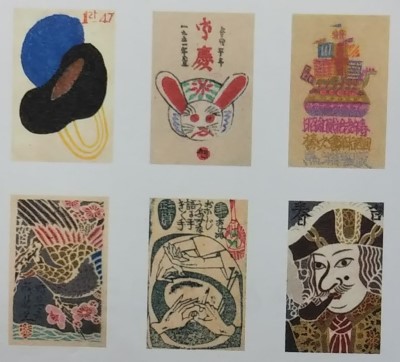
There was an exhibition of Ex Libris, or bookplates, and New Year’s cards at the Chigasaki City Museum of Art until February 25 (Sun). Ex Libris is a small piece of paper which is pasted inside the back cover of a book to show who owns the book. It started being used in Germany in the middle of the 15th century.
Forty-seven Ex Libris and 248 New Year’s cards (1946-1951, except for 1949) were owned by the late Shozo Saito, the first director of the city museum. The cards came from members of a group named “An alder,” consisting of 161 artists.
Saito also made book covers with envelopes sent from noted writers and artists, which highlighted the lack of beautiful paper just after WWII. A book bound by Saito perfumed when it was opened. He seemed to be an eccentric person, and to love elegant things. Three books which were bound by him, “紙魚供養 (Shimi kuyo)”, “紙魚地獄 (Shimi jigoku), ” and ”日本好色蔵書票 (Nihon koshoku zosho hyo),” whose titles probably aroused visitors’ interest, were also on display.
Photo exhibition and report on Noto and Great East Japan Earthquakes by Munesuke Yamamoto
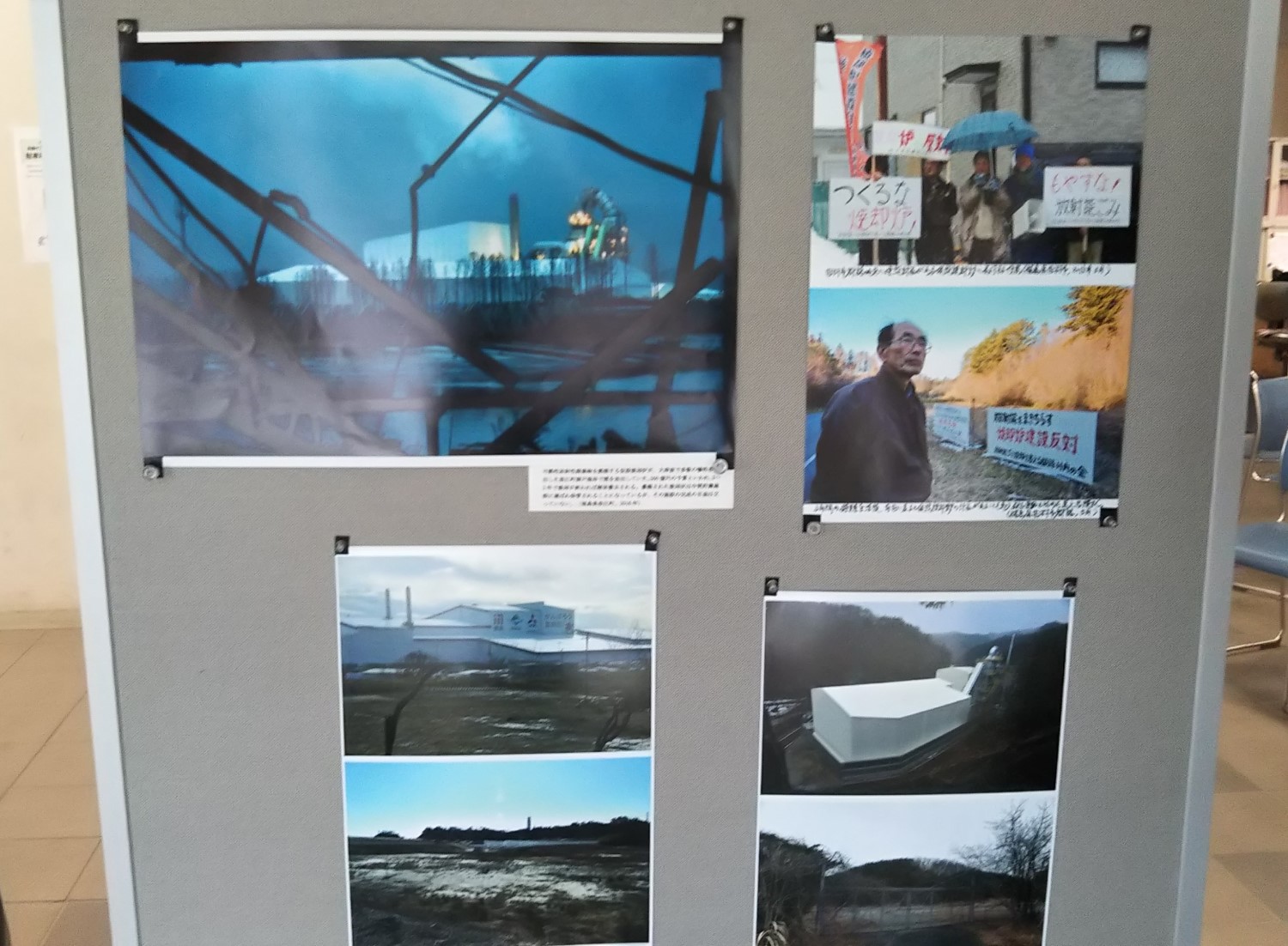
The photo exhibition by photo journalist Munesuke Yamamoto was held at Hagisono Ikoi no Sato on March 2 (Sat) and the 3rd (Sun). On the afternoon of the first day, Yamamoto lectured on the Noto and Great East Japan Earthquakes with a lot of pictures. Yamamoto visited Wajima with relief supplies by minitruck on Jan. 10. The site of the famous morning market had been burnt down. The first floors of most houses had fallen down. Many buildings of the famous Sojijisoin Temple had also collapsed. The Shika nuclear power plant in Hakui city reportedly suffered light damage. There were a series of discernible quakes before the main quake.
Thirteen years have passed since the Great East Japan Earthquake occurred on March 11, 2011. Yamamoto continues reporting the lives of former residents of cities and towns near the Fukushima dai-ichi nuclear power plant. Not a few sufferers have passed away over the 13 years. For some local residents, anti-nuclear power plant movements have not finished yet, and Yamamoto keeps taking pictures of such people. For most urban residents, however, the disaster is an event that has fallen into oblivion, and they do not know sufferers’ ongoing plight.
Exhibition of poems with pictures entitled “I feel ashamed…” by Kira
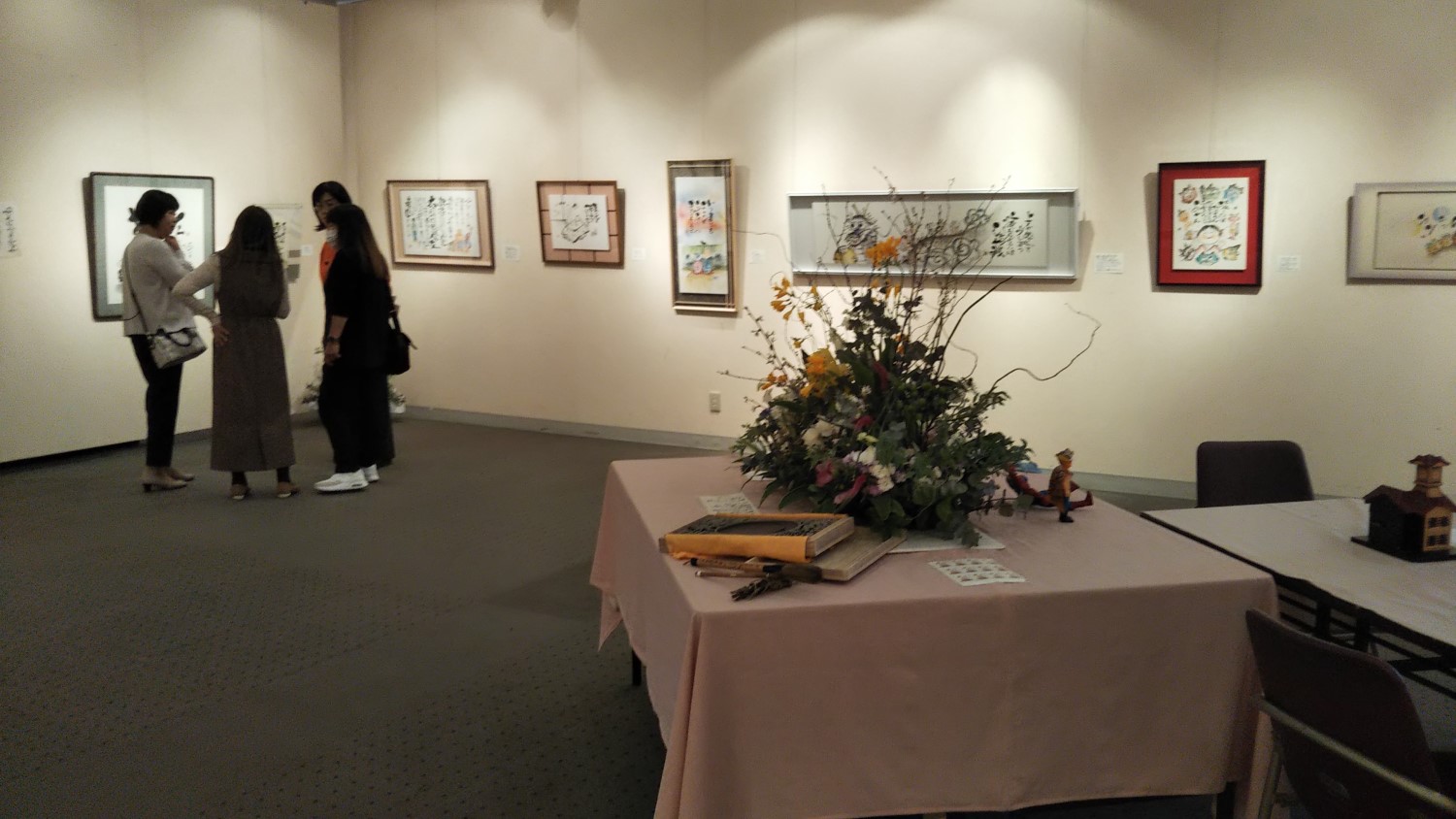
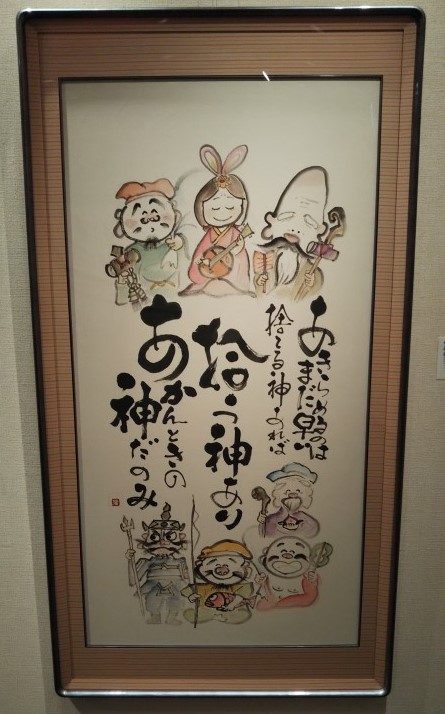
About 30 unusual art works were on display at the Citizen Gallery from March 20 (Wed) to the 24th (Sun). This was Kira’s first solo exhibition. She is a calligraphy master. She used to write poems in Indian ink, and she came to add pictures to them before she was noticed.
Her poetry is written with simple, gentle and hearty words with the rhythm of haiku. Some poems warm readers’ hearts. Some encourage readers, and some make them look back on their lives. And some of her poems and pictures were humorous. She writes down words which come to mind, while doing housework, parenting, and other daily chores. She has drawn for seven years, and is planning on studying paintings more.
.jpg)
Translation by the writer, from right to left
It is getting dark. Lights have already lit in a mountain village.
You have worked enough today.
May tomorrow be blessed with a fair sky too.
A steam locomotive is running with a whistle.
Exhibition and sale of the products made by disabled people at AEON
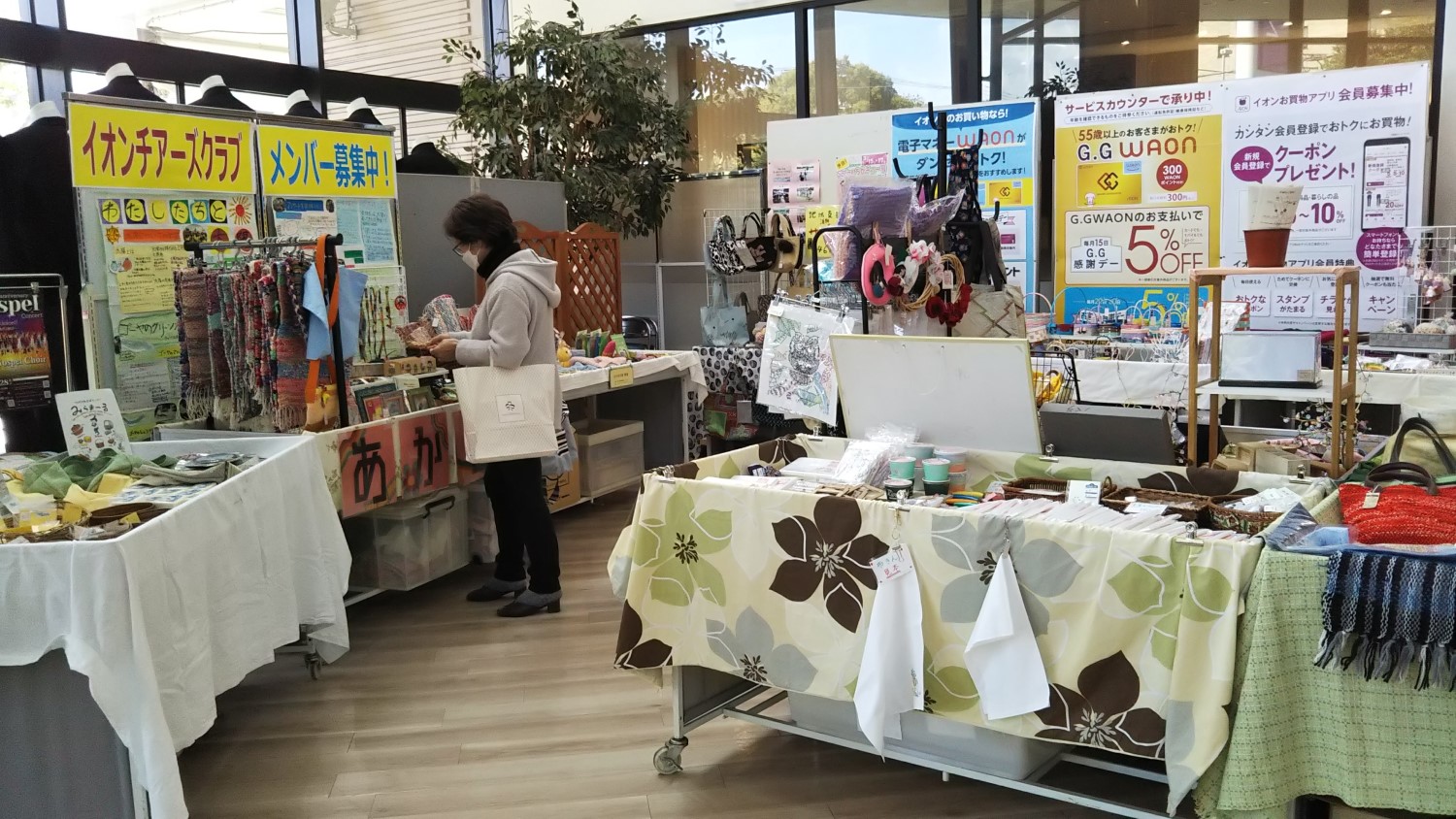
A periodic event took place at the main entrance of AEON Central Chigasaki store from March 4 (Mon) to the 8th (Fri). Nine sheltered workshops for the disabled participated: Akai Tori, Rakuan, Sazan Bea, Hikari no Kaze, Akashia, Nakama no Ie, Miramaru, Pain Natsu, and Shonan Onigawara.
Articles for sale were pottery, bags, trinkets, handkerchiefs, scarves, and more. Each workshop seems to have its strong field. Every item was carefully made and inexpensive. A lot of people dropped by at the corner after shopping and enjoyed a treasure hunt. The event is held twice a year, on the first floor of City Hall and in the entrance hall of AEON alternately.
Picture exhibition by Chigasaki Artist Association, and live painting by Ryu Ambe

The 41st art exhibition by the Chigasaki Artist Association took place at Chigasaki City Museum of Art from March 5 (Tue) to the 24th (Sun). Forty-two works by association members and forty-three by applicants were displayed. Frame sizes of the pictures ranged from No. 10 to 80; association members drew large pictures (No. 60 and 80) and applicants did smaller pictures (No. 10 or slightly larger). Visitors walked slowly and sometimes stopped in front of some pictures. It is good to have an artistic and relaxing time once in a while.
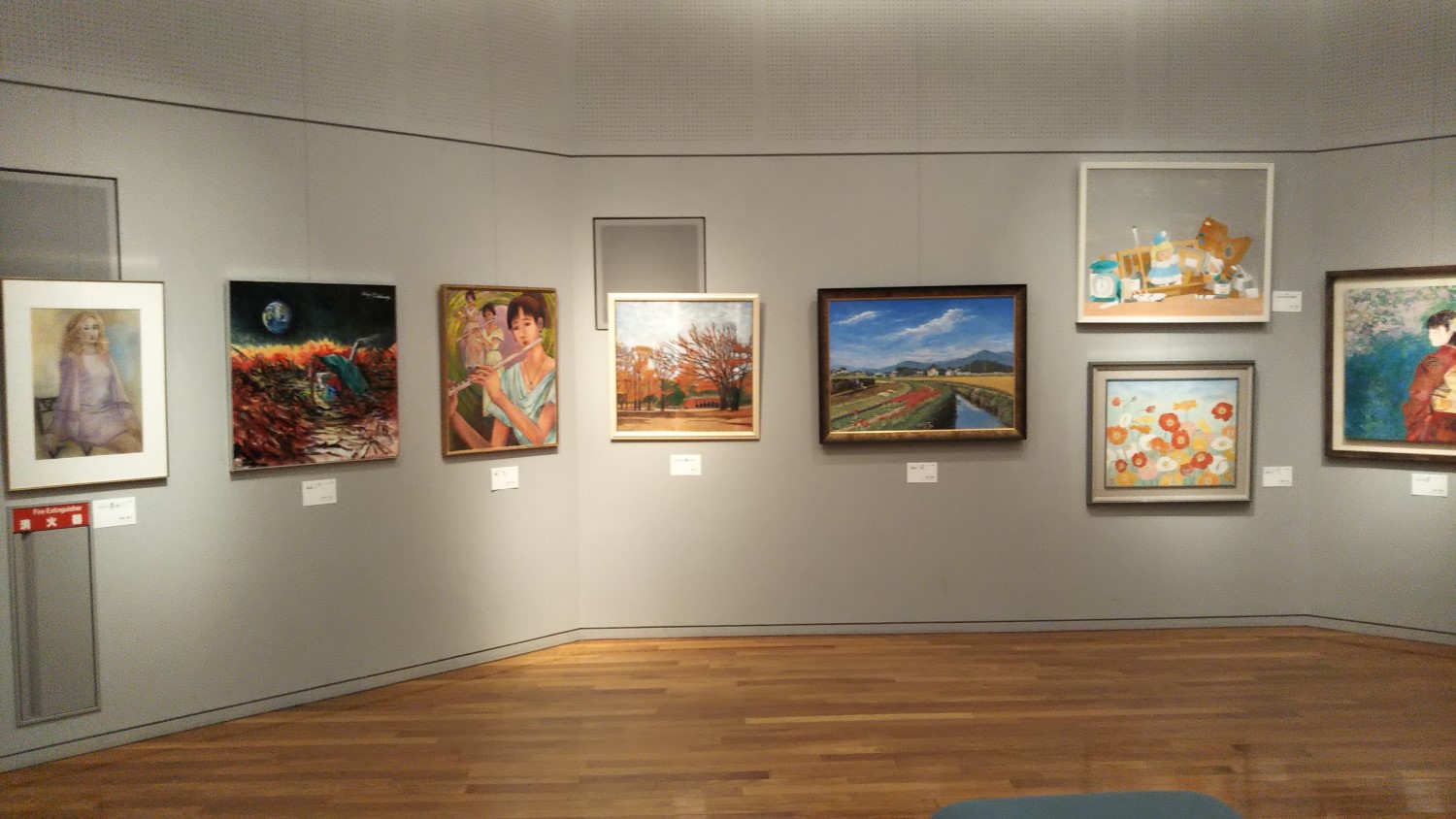
From 13:00 to 14:00 on March 10 (Sun), a live painting event by Ryu Ambe* was held at the entrance hall of the museum. He painted a picture to the rhythm of melodies from his smartphone in front of about 60 spectators. He said that while he was drawing curves, his image was becoming clear and finally he decided to draw a pair of birds. Spectators could not figure out what he was drawing until almost the end.
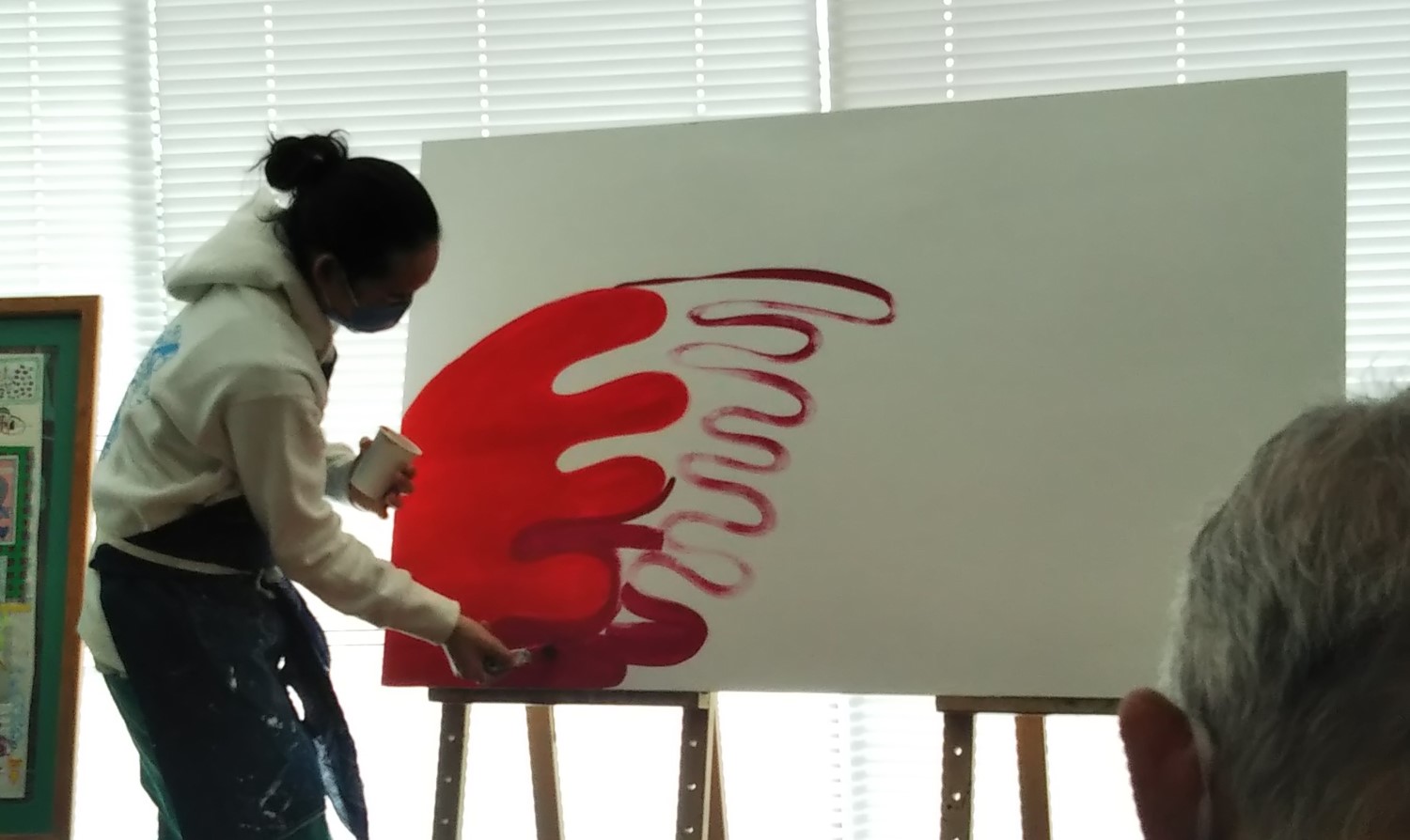
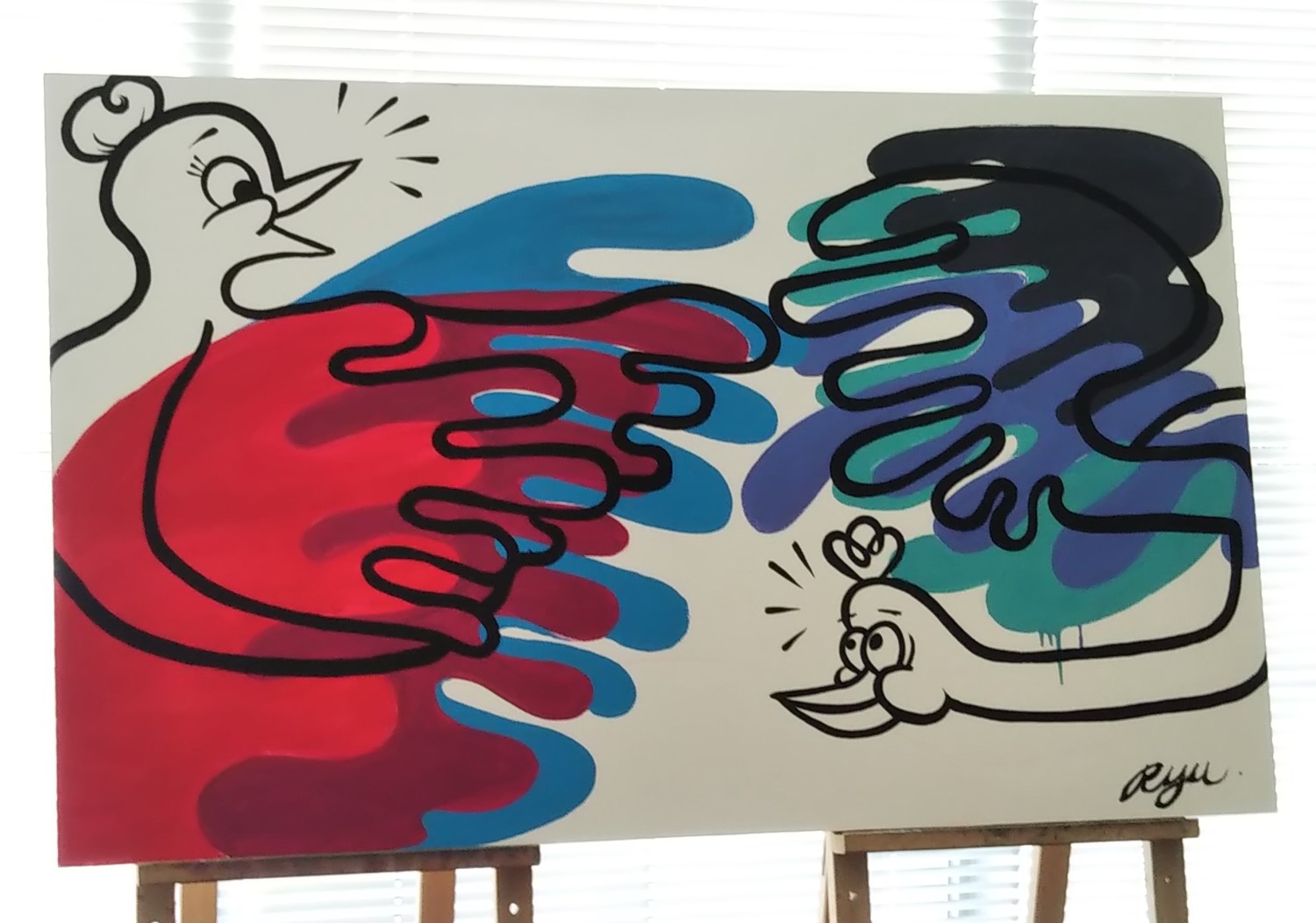
*Ryu Ambe: he lives in Chigasaki. Characters and colors peculiar to him are used as patterns for clothes. His pictures are on the walls of buildings along Yuzo Street and Southern Street. For his works, go to https://ryuambe.com/
Panel exhibition of volunteer groups acting in the city

The panels of 28 volunteer groups in the city were displayed on the first floor of City Hall, Fureai Plaza, from March 9 (Sat) to the 21st (Thu). The 28 groups are registered in the Citizen Support Center. The support center planned the event to let citizens learn various volunteer groups are working to make the city more livable.
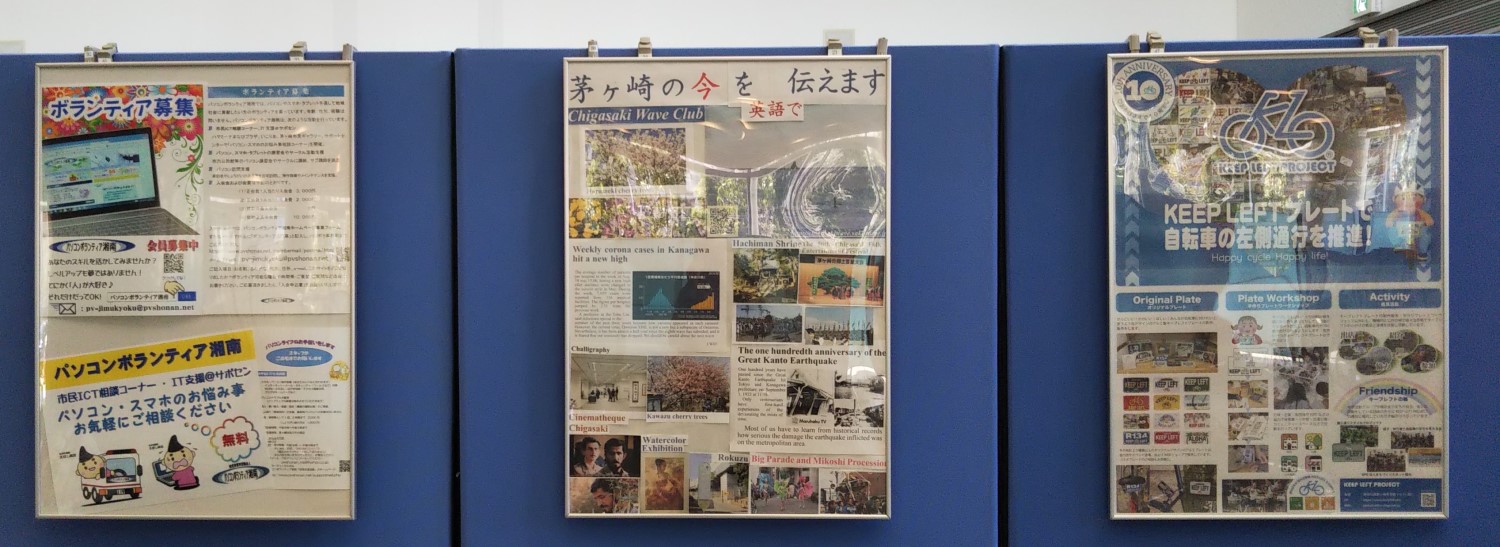
えぼし寄席, or Eboshi Yose
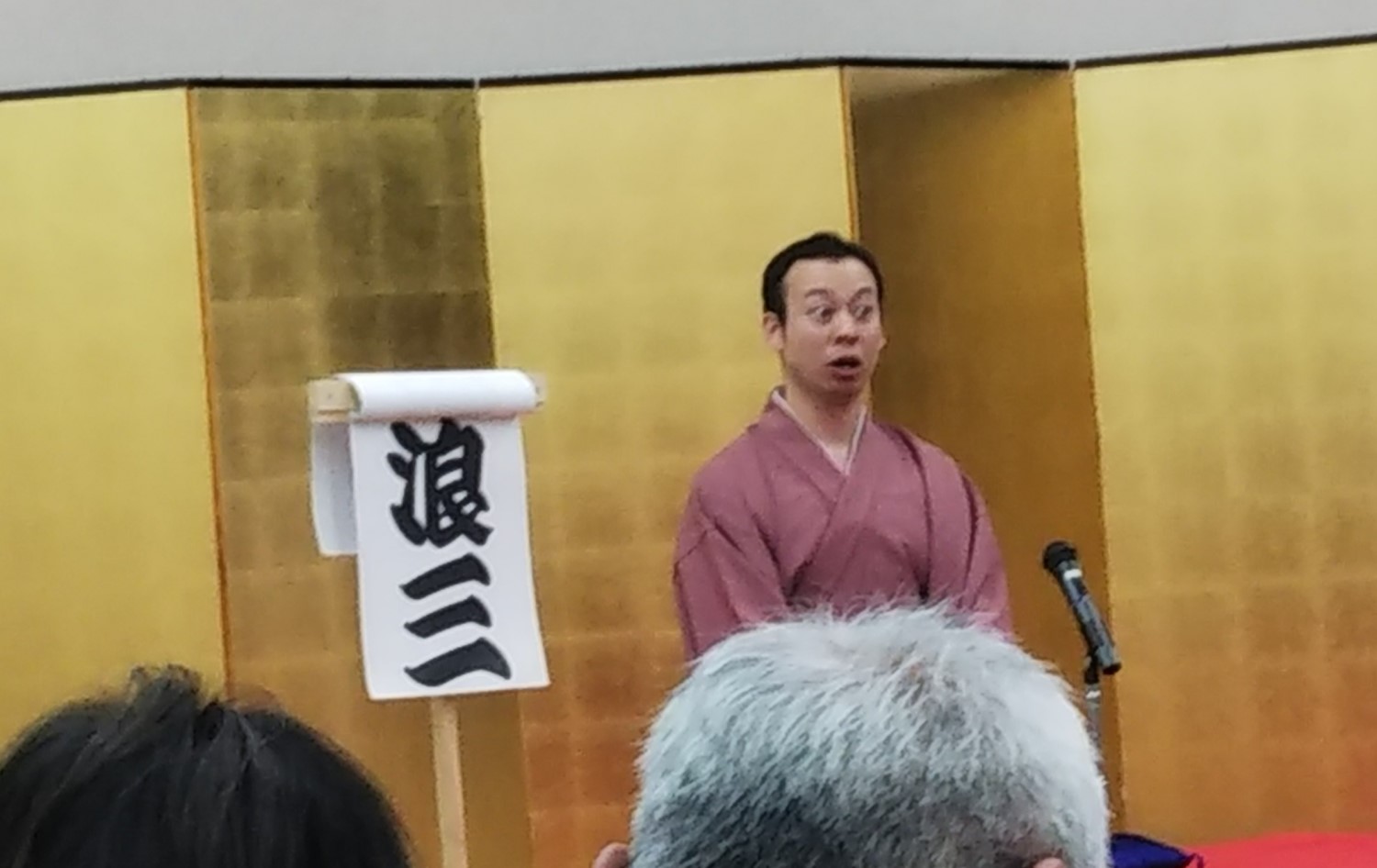
A variety show took place at Chigasaki City Kinro Shimin Kaikan, or Chigasaki Labor Citizen Hall, on March 17 (Sun). Yose (寄席) means a variety hall. The training room (A) on the sixth floor became a variety hall on the afternoon of that day. More than a capacity audience, over 120, enjoyed traditional Japanese comic story telling (落語, or rakugo) and magic tricks. Six comic storytellers and a magician performed. Some of them were amateur, and some were professionals, and all of them were members of a group led by Namiza Sanyutei.
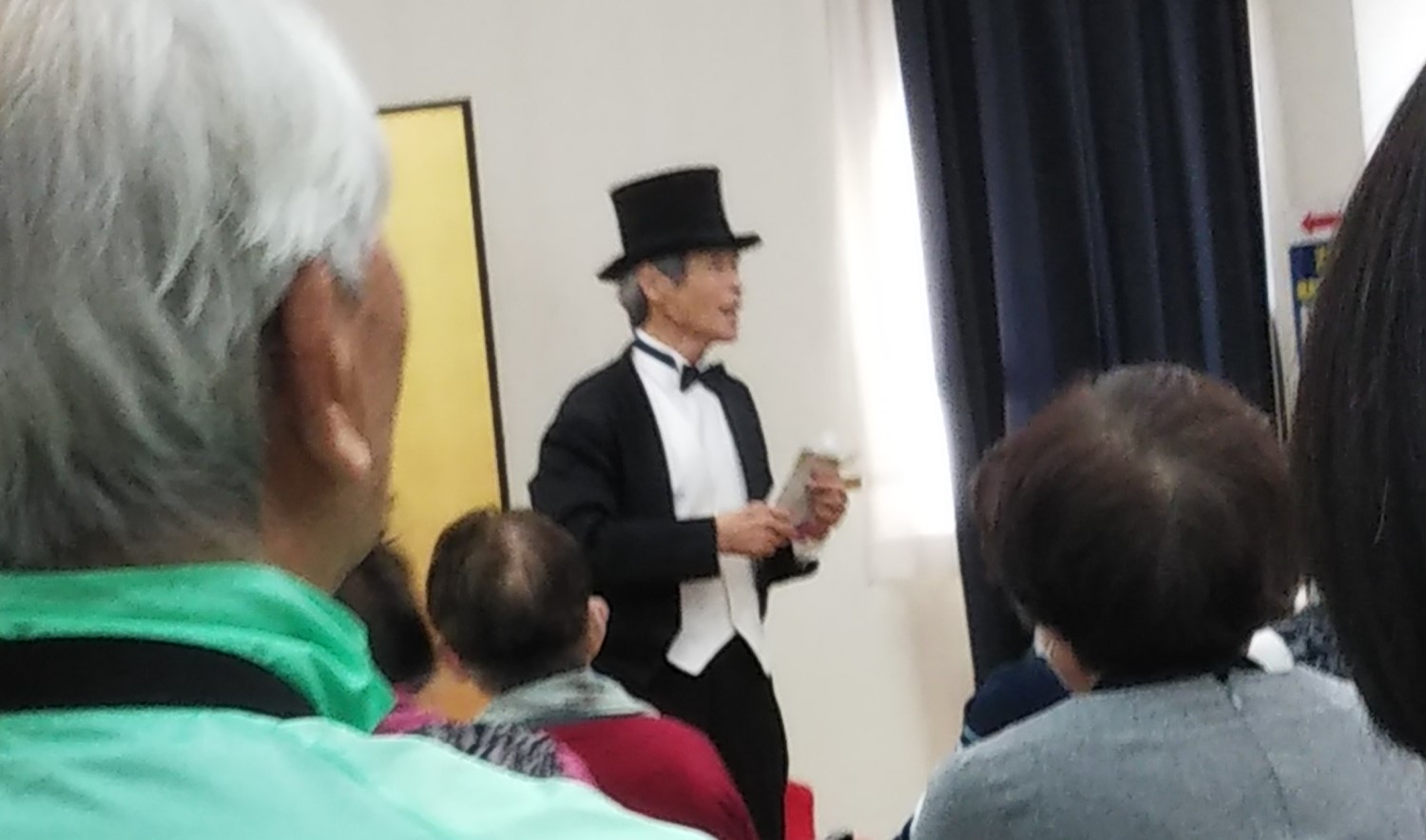
The audience were mostly the middle-aged and elderly. The proportion of men to women was nearly one to one. They seemed to enjoy every performer’s play. Rakugo is Japanese traditional culture and not merely a funny story, but has a lot of subtleties of human nature. In light of their ages, the reporter supposes most of the audience prefer rakugo to manzai, in which two comedians dialogue quickly with rough language.
Events in late March and April
Citizen Gallery
●Calligraphy exhibition: March 20 (Thu) to the 23rd (Sat) 10:30~18:00, the 24th (Sun)10:30~19:00
●The 29th portrait exhibition by Chigasaki Art Study Society: March 26 (Tue) 14:00~18:00, the 27th (Wed) to the
30th (Sat) 10:00~18:00, the 31st (Sun) 10:00~17:00
●The 22nd art exhibition by Seisho Kai: April 4 (Thu) to the 6th (Sat) 10:30~16:00, the 7th (Sun) 10:30~16:00
●The 21st exhibition of water color sketches by Shonan Sketch Club: April 9 (Tue) 13:00~18:00, the 10th (Wed)
to the 13th (Sat) 10:00~18:00, the 14th (Sun) 10:00~16:00
●The 14th art exhibition by Koide Black-and-White Drawing Club: April 17th (Wed) 13:00~17:00, the 18th (Thu)to the 20th (Sat) 10:00~17:00, the 21st (Sun) 10:00~15:00
●The photo exhibition commemorating the 48th anniversary of the club’s foundation by Eboshi Photo Club: April 24 (Wed) 13:00~17:00, the 25th (Thu) to 27th (Sat) 10:00~17:00, the 28th (Sun) 10:00~16:00
Unveiling ceremony of Yuzo Kayana’s bronze statue and presentation of the honorary citizen’s certificate

The unveiling ceremony of Yuzo Kayama’s bronze statue and the presentation ceremony of the honorary citizen’s certificate to him are going to take place at the front yard of City Hall on his birthday, April 11 (Thu).
The project has been promoted mainly by the Chigasaki Chamber of Commerce and Industry. His portrait which will be placed at the entrance of the Civic Hall will be exhibited on that day.
Date and time: April 11 (Thu) at 14:00, 2) Venue: the front yard of the City Hall. The ceremonies will be held unless rain falls heavily, and will be open to citizens, but they may be restricted if too many people gather.
Exploring Color and Space - Chigasaki City Museum of Art
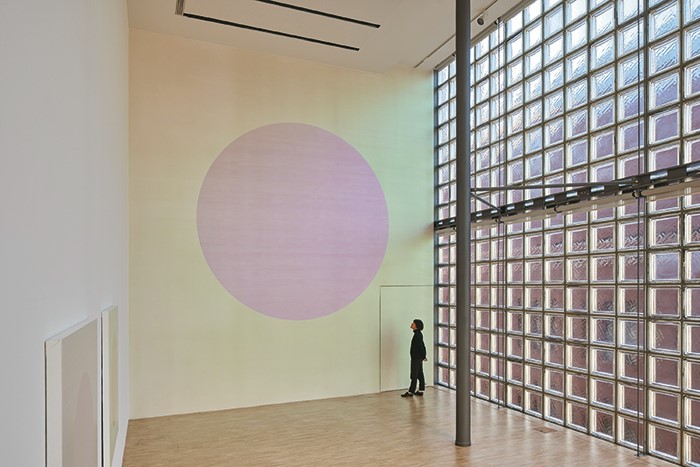
Shingo Francis enchants people with beautiful colors, winning high praise for his works from the world. His pictures, drawn with multi-layered colors and a fine combination of colors, produce noble and silent space.
Period: March 30 (Sat) to Jun 9 (Sun)
Entrance fee (yen): Adult 800, Uni. student 600, Citizen at 65 and older 400, High school student and younger as well as handicapped people and their caregivers free